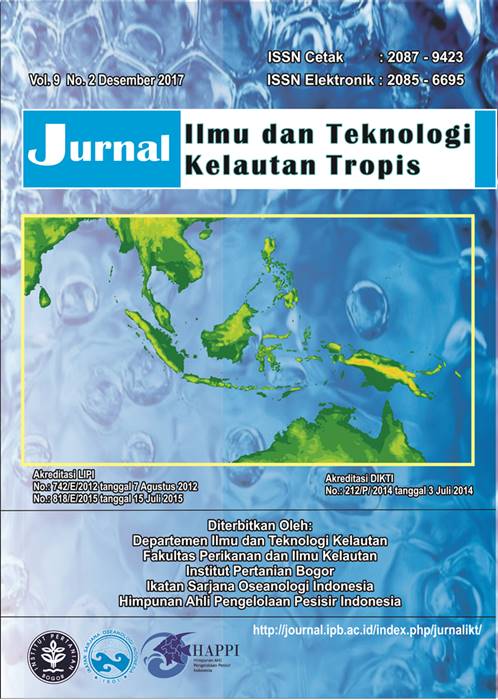THE BODY OF LOBSTER CATCHES IN PALABUHANRATU THAN THE APPLICABLE REGULATORY
Abstract
Lobster is one of the commodities that Indonesia export fisheries worth selling high. The value of selling lobster is affected by type, size, and condition or completeness of her body. Palabuhanratu is one of the centers of the lobster fishery in the South of West Java. Research on condition of fishing lobster in Palabuhanratu was done in April through November 2016 include the type, gender, number, and size (carapace length and weight) and its relationship with regulatory. Observation and measurement of the collecting is done in the lobster that come for each/sold to the warehouse by fisherman and follows directly the activities of catching lobsters. The data already obtained tabulated and analyzed. The results showed that types of lobsters captured fisherman Palabuhanratu are Panulirus ornatus, Panulirus penicillatus, Panulirus versicolor and Panulirus homarus. The majority of lobsters are caught is a kind of lobster P. homarus and P. ornatus and then followed P. penicillatus and P. versicolor. The number of the male for P. homarus, P. versicolor and P. ornatus more than females while the females of P. penicillatus more than males. The majority of the lobster weights less than 300 grams and carapace length less than 8 cm. The body condition of fishing lobster in Palabuhanratu based on the lobster fishery regulations that exist for all types of lobsters is a majority yet decent catch.
Keywords: type, lobster, Palabuhanratu, size
Authors
This work is licensed under a Creative Commons Attribution 4.0 International License.
Jurnal Ilmu dan Teknologi Kelautan Tropis i is an open-access journal, meaning that all content is freely available without charge to the user or their institution. Users are allowed to read, download, copy, distribute, print, search, or link to the full texts of the articles in this journal without needing to request prior permission from the publisher or the author.
All articles published by Jurnal Ilmu dan Teknologi Kelautan Tropis are licensed under the Creative Commons Attribution 4.0 International License. This allows for unrestricted use, distribution, and reproduction in any medium, provided proper credit is given to the original authors.
Authors submitting manuscripts should understand and agree that the copyright of published manuscripts is retained by the authors. Copyright encompasses the exclusive rights of authors to reproduce, distribute, and sell any part of the journal articles in all forms and media. Reproduction of any part of this journal, its storage in databases, and its transmission by any form or media is allowed without written permission from Jurnal Ilmu dan Teknologi Kelautan Tropis.


